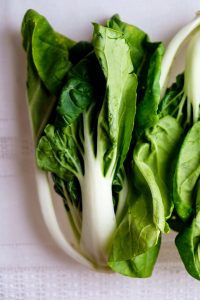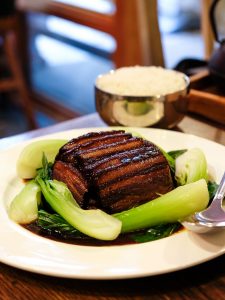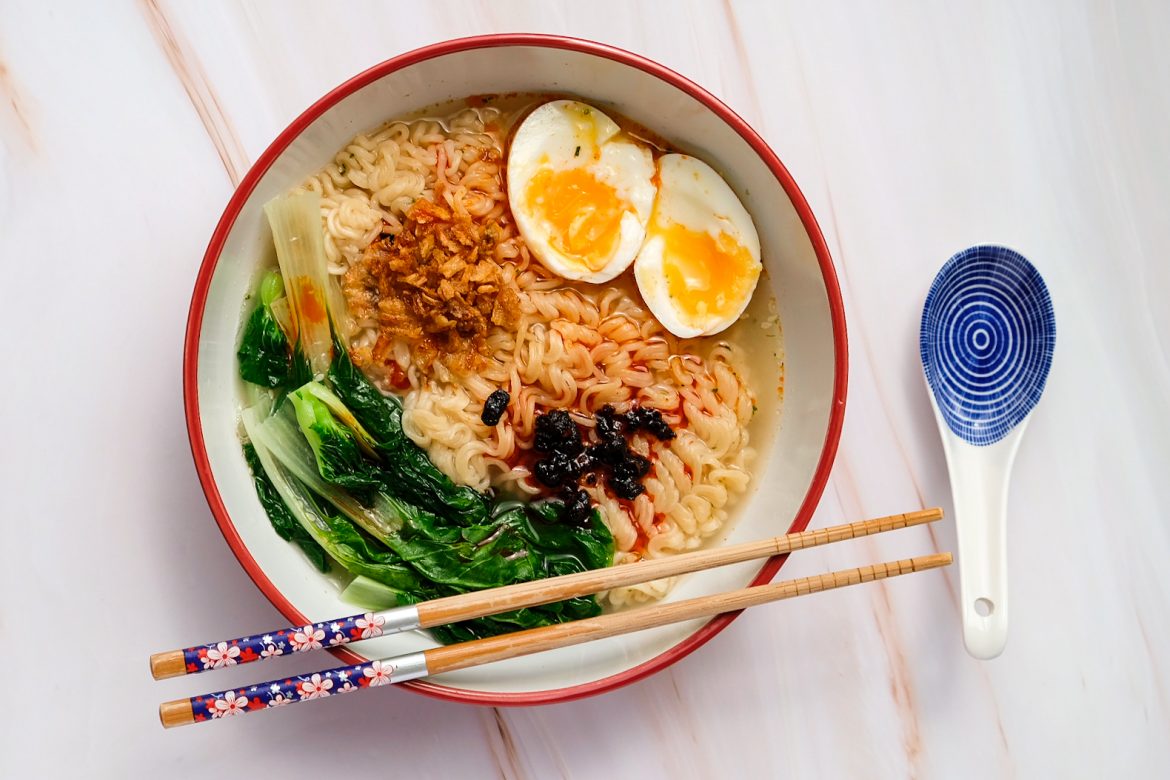Elisha Young, aka @elisha.eats on instagram, has her sights set on the unassuming, surprisingly delicious joys of pak choi this August
It was in the depths of winter lockdown – when I felt like I hadn’t seen the sun for months and had lost the ability to talk to another human being – that I really started to appreciate pak choi. It’s a criminally underrated vegetable, often chucked into stir-fries as an afterthought, instead of appreciated for its tender, spinach-like leaves and firm, crunchy stalks. Unassuming at first, pak choi is endlessly versatile. You can steam it, pan-fry it (especially with some crushed garlic cloves and soy sauce), or even boil it and add to soups.

The smaller variety of pak choi have pale, white stalks and a milder flavour
By lockdown three, when I’d lost the will to make myself a decent work-from-home lunch, but still wanted something warm and comforting, I started adding pak choi leaves to the water as I boiled my instant ramen. While not exactly healthy, the mild, pleasant flavour of the stalks added some much-needed greenery to an otherwise overwhelmingly beige dish – and it conveniently takes the same amount of time to cook as a packet of instant noodles. By the way, if you want to make your ramen less ‘uni student who can’t cook’ and more ‘speedy, yet mouth-watering lunch’, just add a soft-boiled egg, fried onions and a spoonful of chilli oil.
You can steam it, pan-fry it (especially with some crushed garlic cloves and soy sauce), or even boil it and add to soups
Pak choi is readily available from supermarkets, but if you’re up for a fun project, try growing your own using a method I like to call ‘plant piracy’. Simply take a head of pak choi and cut off the base, leaving about two or three inches, then place in a shallow saucer or container of water. Leave the base somewhere sunny, regularly changing the water, and it should sprout and start growing roots. At this point, plant it in your garden – before long, you will have a new head of pak choi!
If this sounds like too much faff, I recommend a trip to Mill Road and its three Asian supermarkets: Cho Mee, Ocean Supermarket and Seoul Plaza. You will discover the smaller, paler variety of pak choi more commonly used in Chinese cooking.

The pork belly dish served at Liutaio Music Cafe on Mill Road (photo credit @elisha.eats)
‘Pak choi’ (sometimes written as ‘bok choy’) literally translates to ‘white vegetable’ in Cantonese. This makes more sense when you see the white stems of the shorter kind, compared to the larger, greenish version usually found in the UK.
While on Mill Road, it’s worth checking out Liutaio Music Cafe for one of your five a day. This restaurant also serves as a music shop, and you can enjoy your meal surrounded by violins and guzhengs, with furniture and crockery reminiscent of a traditional tea room. If you’re lucky, you might even get to hear some live music.
On my visit, I treated myself to the pork belly and pickled pak choi: a mound of perfectly braised, melt-in-the-mouth pork slices, swimming in a rich, umami sauce and surrounded by crunchy, vibrant heads of pak choi. Served with a bowl of fluffy steamed rice, it was satisfying and full of flavour. The savoury meat, juicy vegetables and fragrant rice combo was so delicious, it demanded seconds, even after announcing I couldn’t possibly eat another bite. If you’re plant-based, opt for the shiitake mushrooms with seasonal vegetables, which has a sauce so sticky and unctuous, my friend commented: “This feels like it’s glazing my soul.”
Follow Elisha’s Instagram account (@elisha.eats) for more foodie content and inspiration.

